Seminar Report:
Kajitsuka Sensei Seminar 2016
July 2016
Toronto, Canada
copyright © 2016 Douglas Tong, all rights reserved.
______________________________________________________
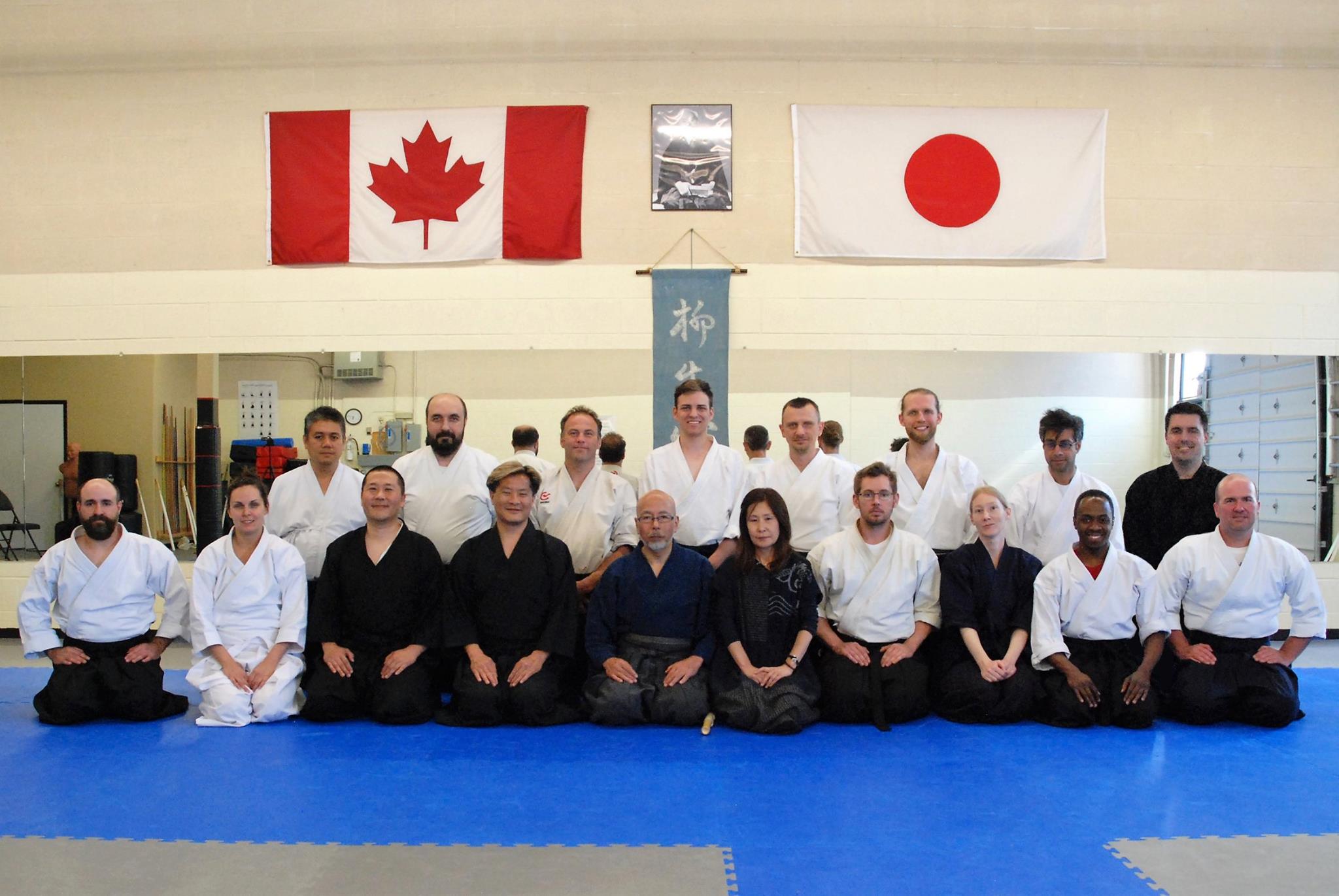
The Canadian Yagyu Shinkage Ryu 2016 Seminar Group
In July of 2016, we once again had the honour of hosting a visit from Kajitsuka Sensei, who presided over seminars in Yagyu Shingan Ryu jujutsu and Yagyu Shinkage Ryu kenjutsu. Below are some of the highlights of this notable visit.
______________________________________________________
Sword Seminar #1: Sangakuen-no-Tachi
For this visit, Sensei reviewed Sangakuen-no-Tachi, the first set of kata in the Yagyu Shinkage Ryu curriculum. Those who were looking for new kata would have been disappointed. However, our more experienced members appreciated the extra work on these introductory kata because this time, Sensei focused on very precise details of the kata.
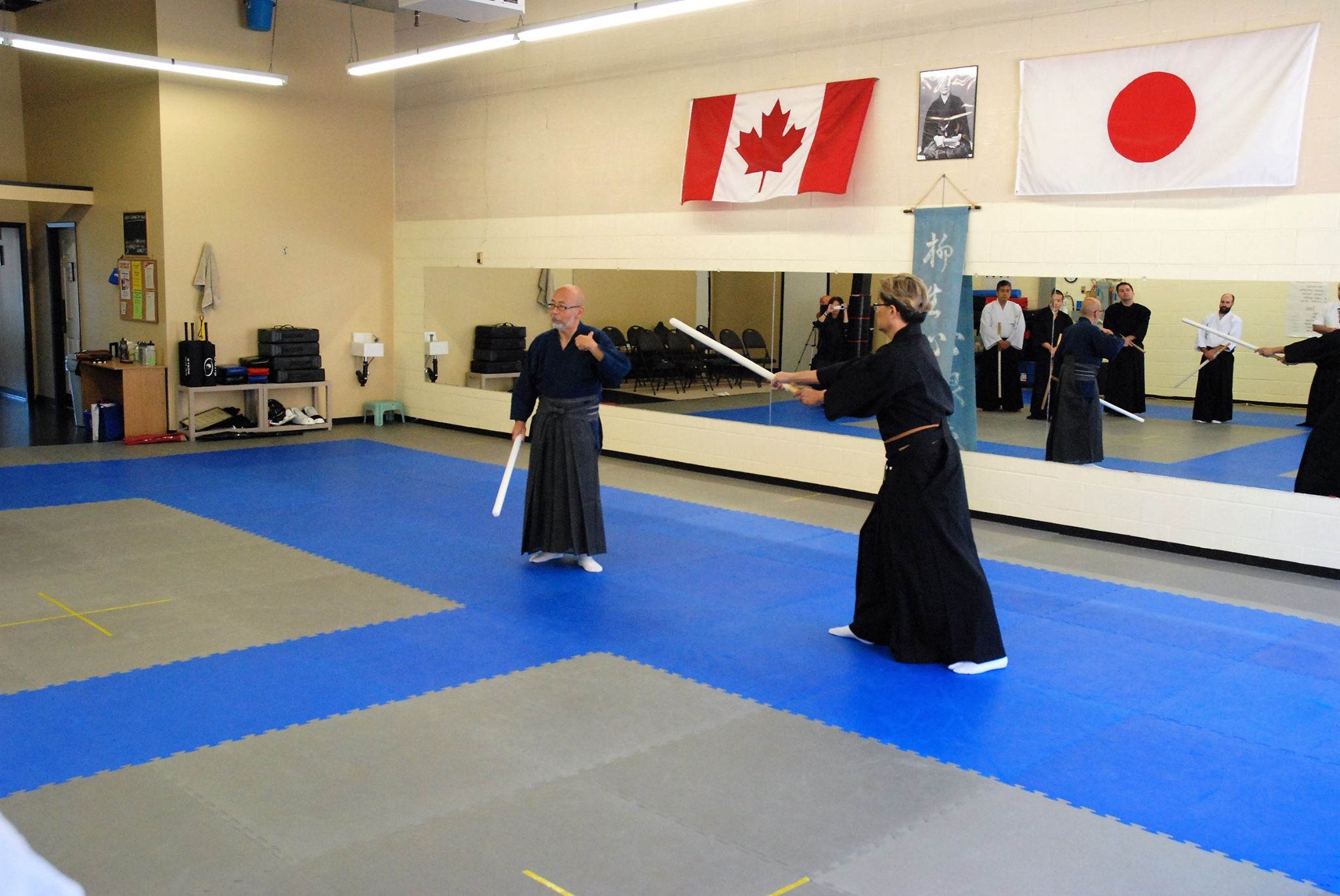
Sensei explaining fine details
He added another layer of complexity to what we already could do; in other words, he gave us the next level of development to incorporate into our practice sessions in the future, the next layer of the onion, the meat and bones. He gave us concepts to incorporate into our training sessions from this point onwards, concepts like:
-how to walk
-stealing distance
-where to look
-breathing control
-fighting mindsets
-sense of correct distance
-cutting rhythms
-timing issues
-body and eye action
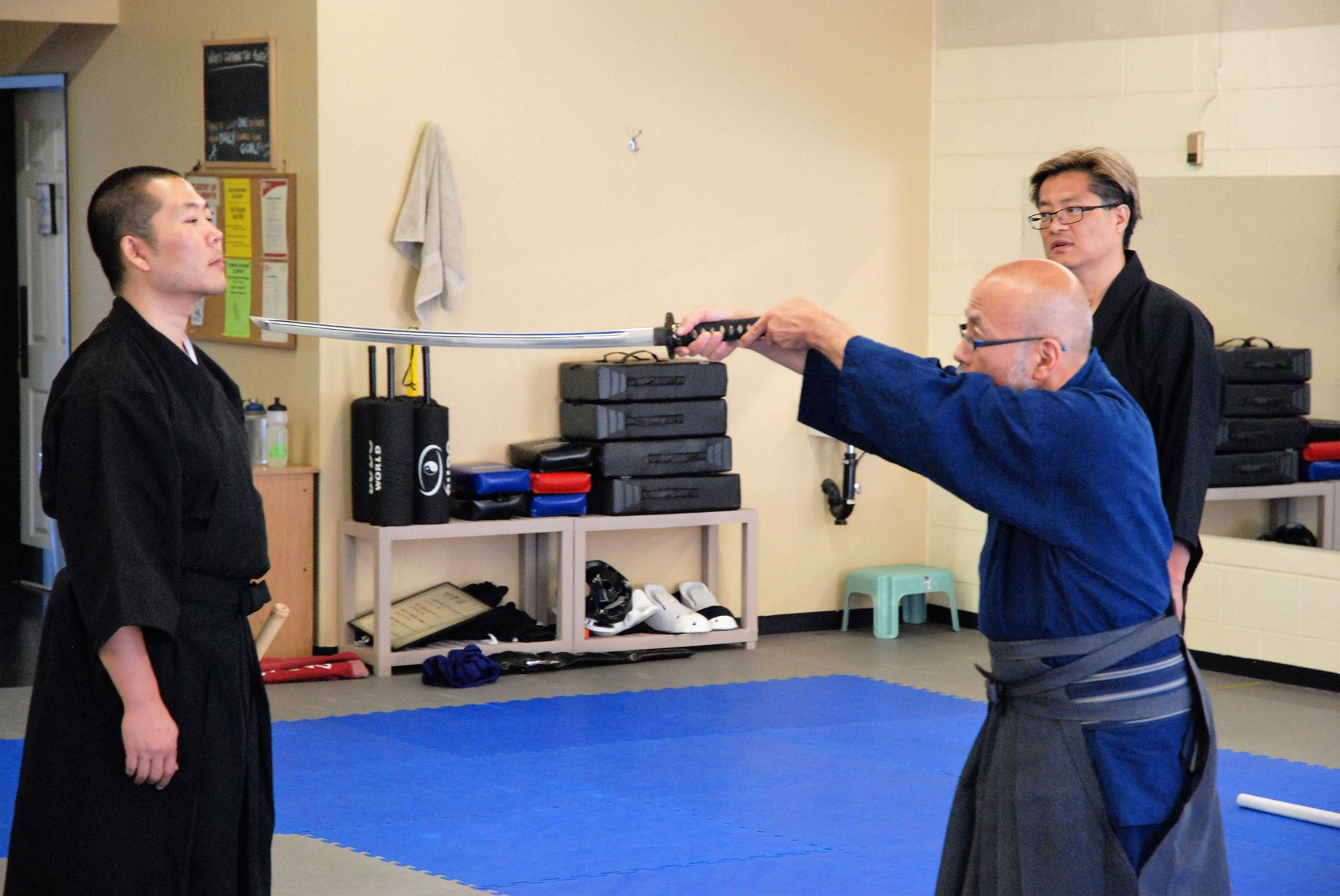
The focus in this seminar was on precise details
Sensei also added some exercises for body mechanics:
-suisha seiho (waterwheel; basically uke nagashi)
-kake seiho (sweep and cut)
-walking drills
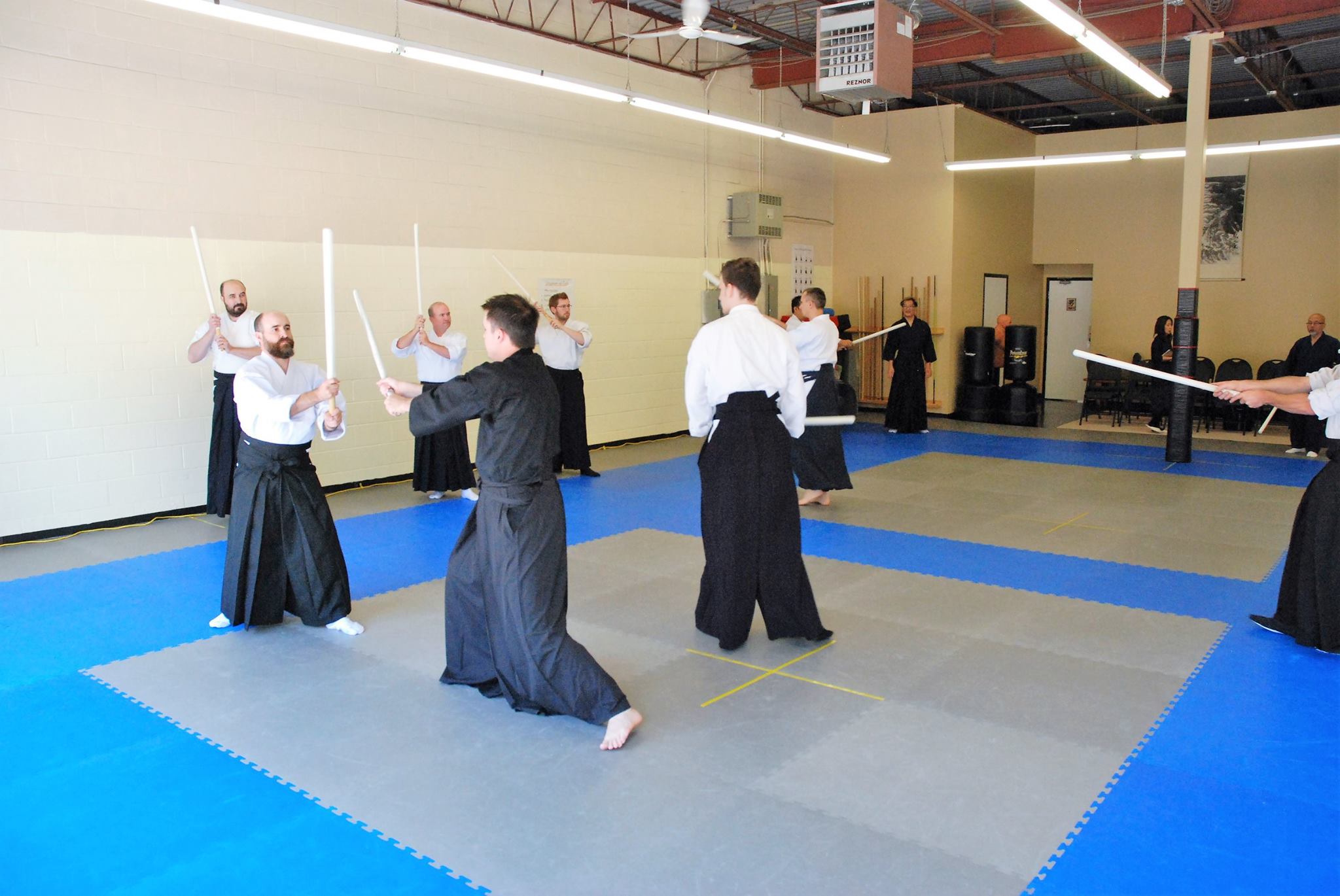
The seminar participants working on some walking drills as Sensei observes in the background
Some people may wonder why he gave these to us as homework. Well, I completely understand. Like my prior experiences in Katori Shinto Ryu, students have the movements down (i.e., they can perform the kata in a rough manner) but the intangibles are not there yet (i.e., they are just empty movements – they don’t have “life”). In other words, students are going through the motions of the kata but really not understanding it yet. It is not “a part of them” yet. They are not expressing themselves through the kata.
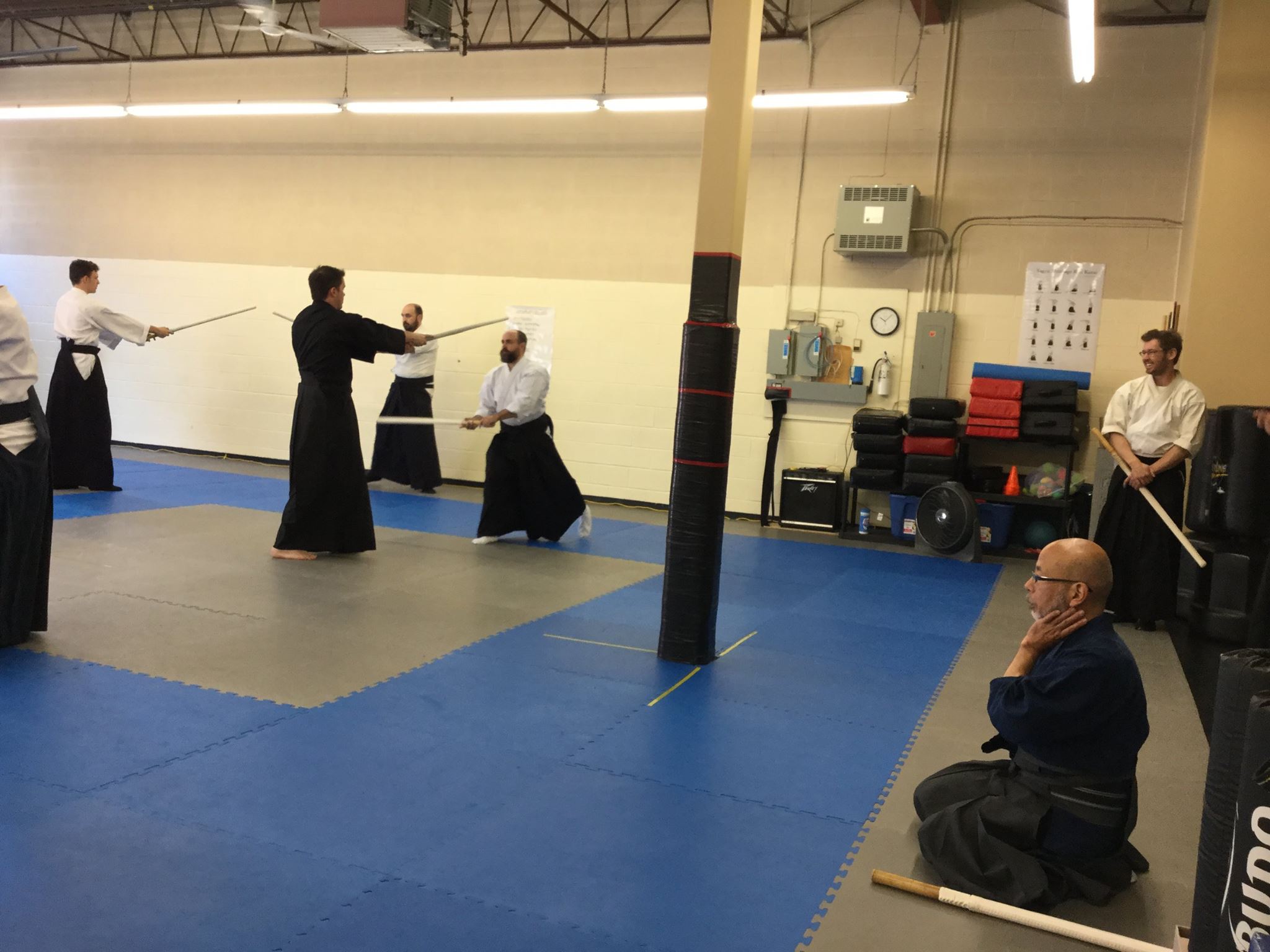
Sensei watching carefully how the students perform the kata
It is like dancing. What separates the novice dancer and the top-class dancer? They both know the movements they are supposed to do, but there is a marked difference between the two in terms of their execution of the dance. Some people call it “the intangibles”. So he gave us the intangibles. Our homework now is to make them a part of us.
______________________________________________________
Jujutsu Seminar
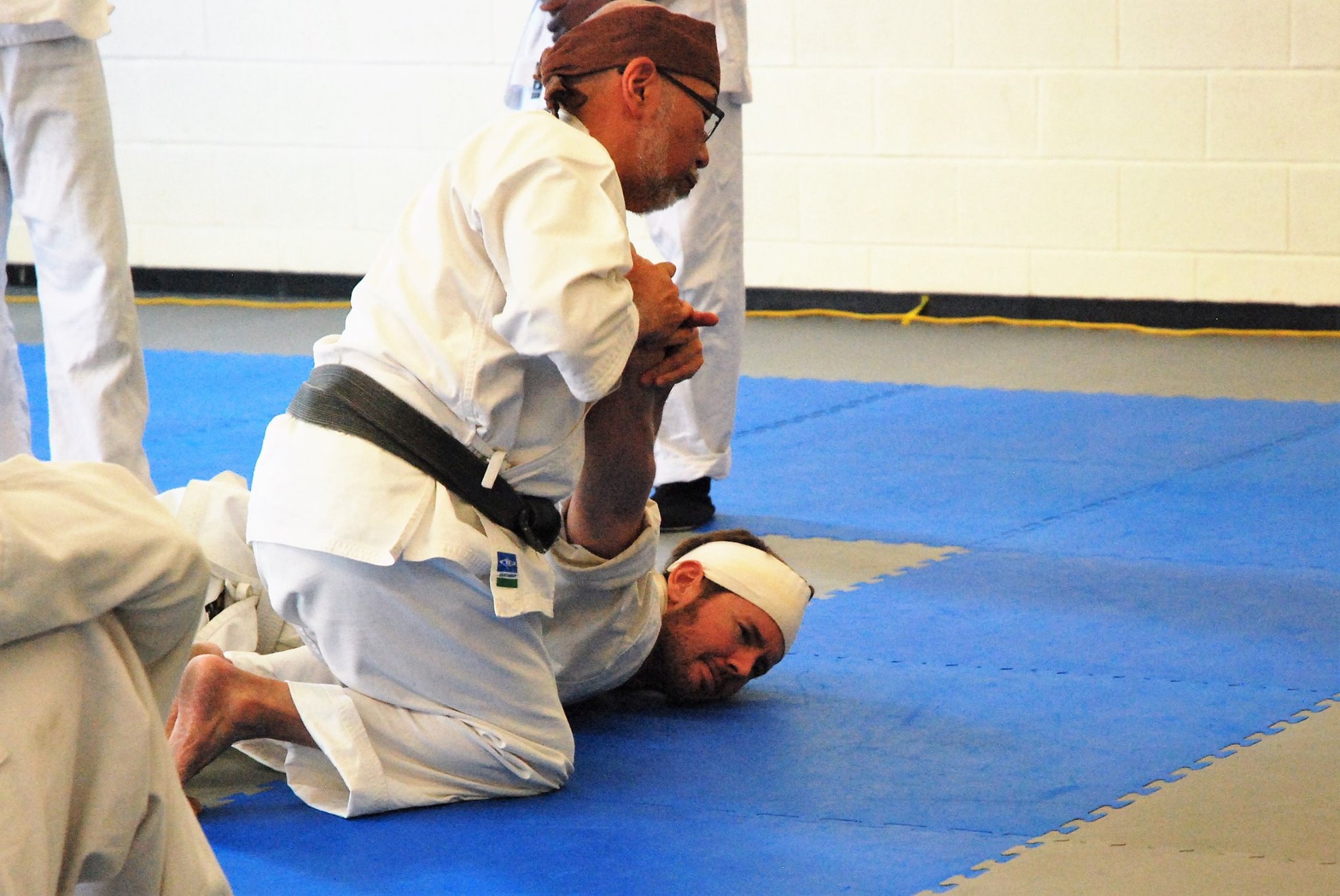
Sensei demonstrating a devastating technique
While the seminar focused a lot on a review of the key techniques that were covered in the 2015 seminar to ensure that they had been learned and practiced correctly, a key idea came up in the post-seminar discussion about the origins of the art, what its original purpose was. Sensei remarked that Yagyu Shingan Ryu is really a very complete art, with two sides. What the students now focus on is only one side of the art, that of the destructive side of the art. Students focus on how to harm or hurt an aggressor.
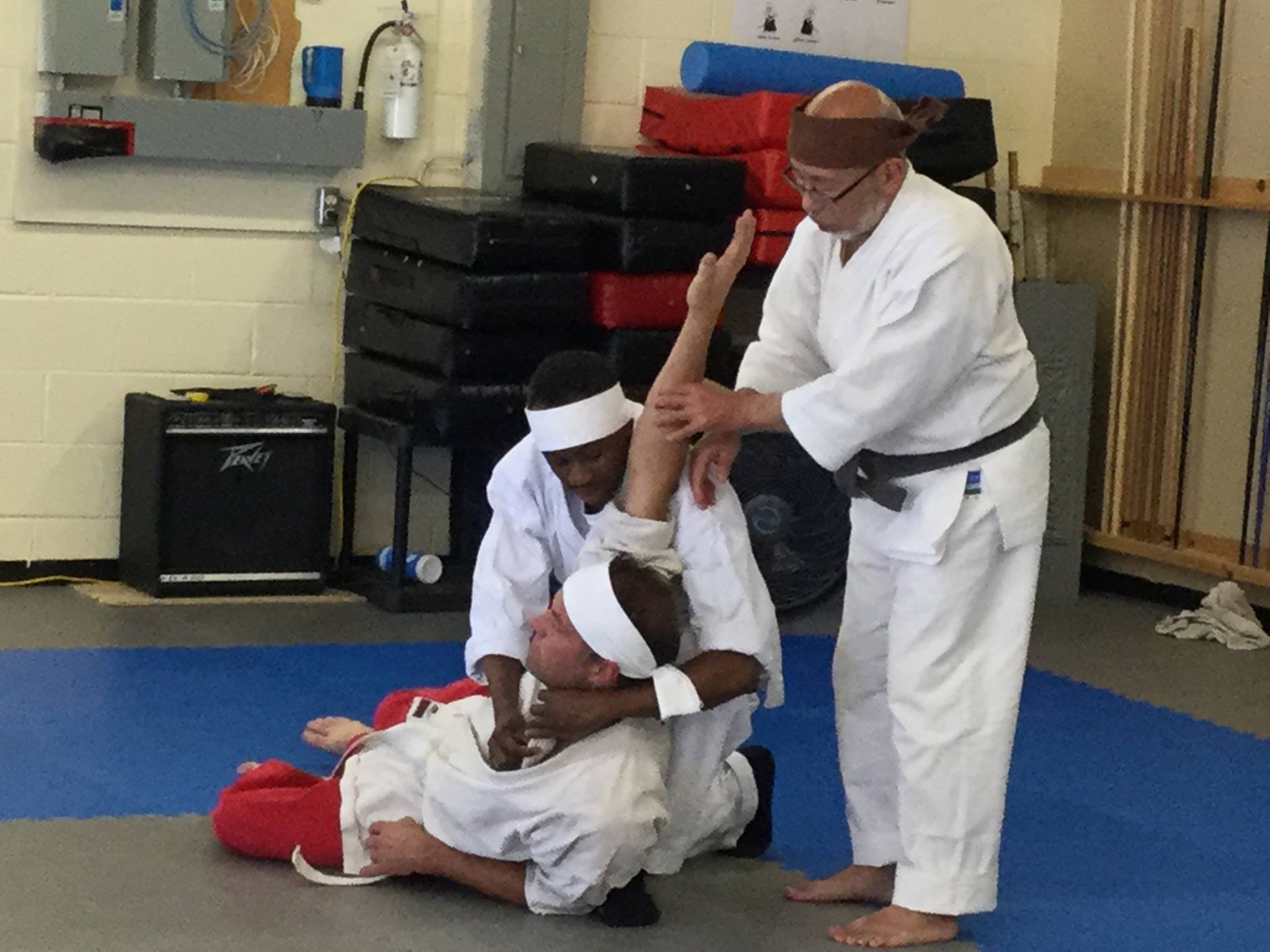
Sensei instructs students on how to apply the techniques correctly
In this way, what they study now is incomplete. There is a constructive, more beneficial side of the art which has been partially lost. That side embraces healing. As Sensei explained, the art can be used to hurt, to destroy. But it also teaches how to heal a person.
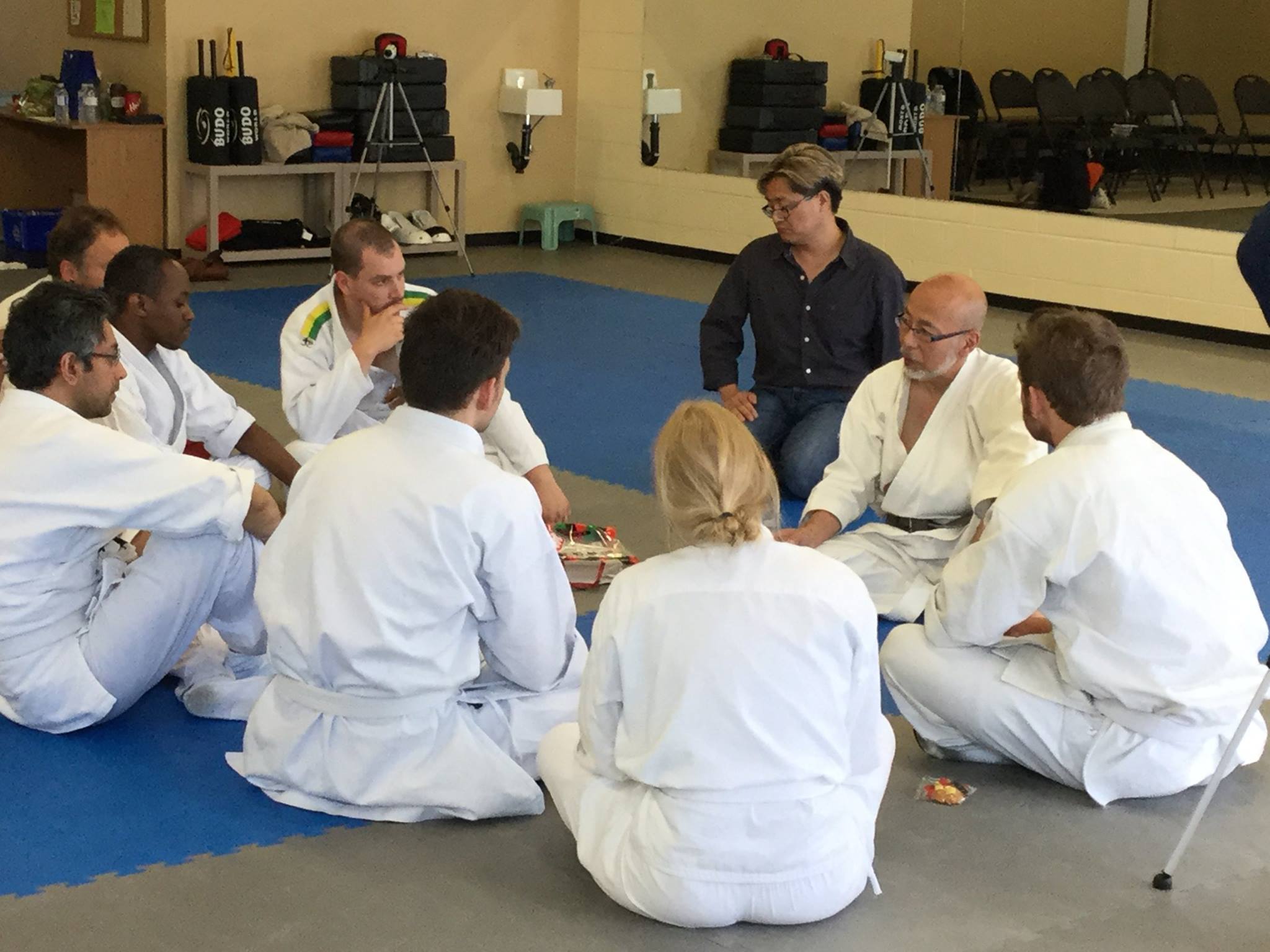
Sensei talks to the group about the history and philosophy of Yagyu Shingan Ryu
As an example, he talked about pressure points. Like he had demonstrated in the katas that the group had reviewed earlier in the day, the knowledge of pressure points plays an important role in submissions and take-downs. However, he also remarked that this same knowledge of pressure points was and can also be used to heal as evidenced by its use in acupuncture and such healing arts as shiatsu. Sensei encouraged the Shingan Ryu practitioners to not just view the art as a destructive one, but to look into its more beneficial side as well.
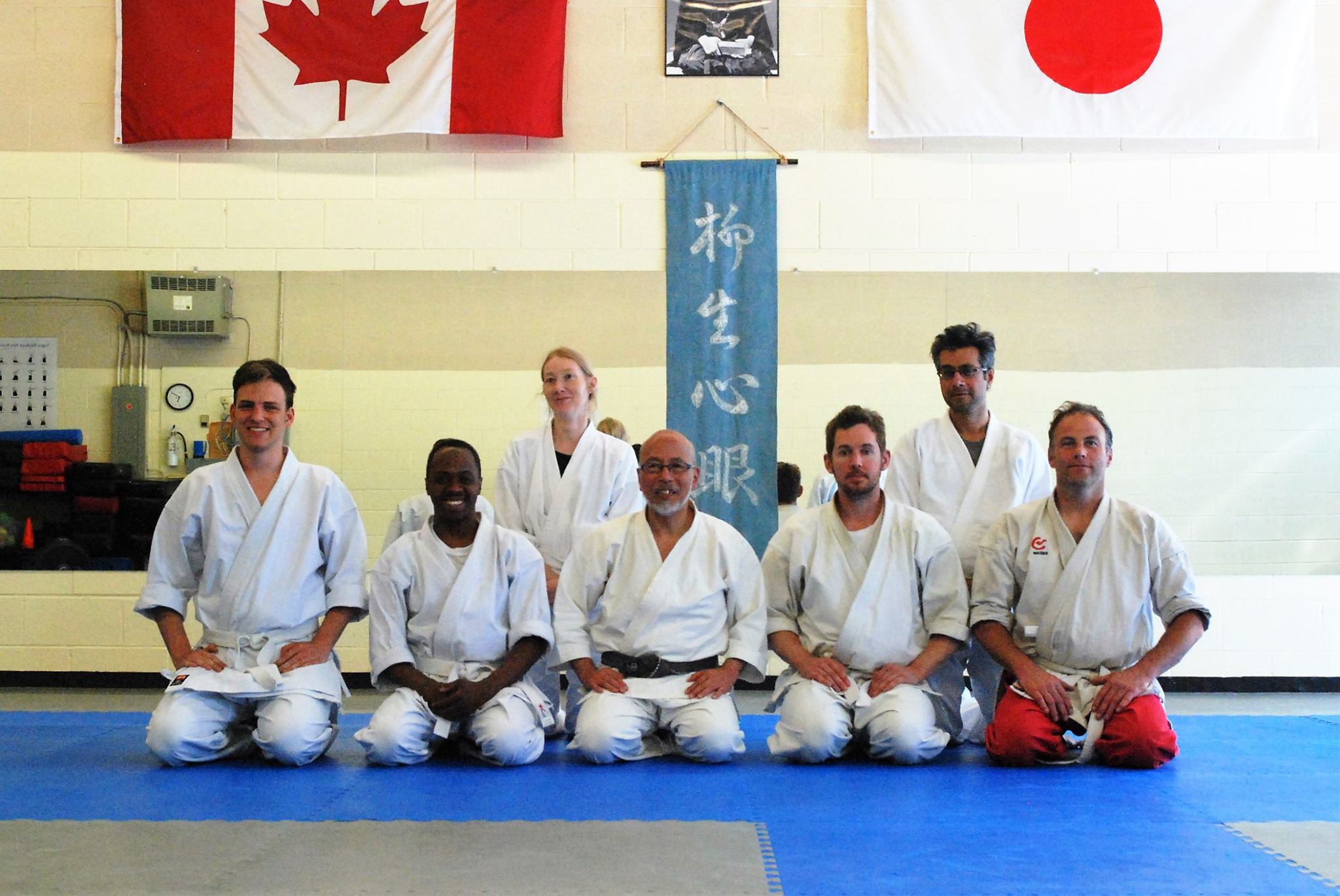
The Canadian Yagyu Shingan Ryu 2016 Seminar Group
______________________________________________________
Sword Seminar #2: Kuka-no-Tachi
In this seminar, Kajitsuka Sensei focused on two important technical concepts: understanding your distance and reading the mind of the opponent. Knowing your distance is crucial to determining whether you will be cut or not. So a lot of time was focused on where is the safe zone and where is the danger zone.
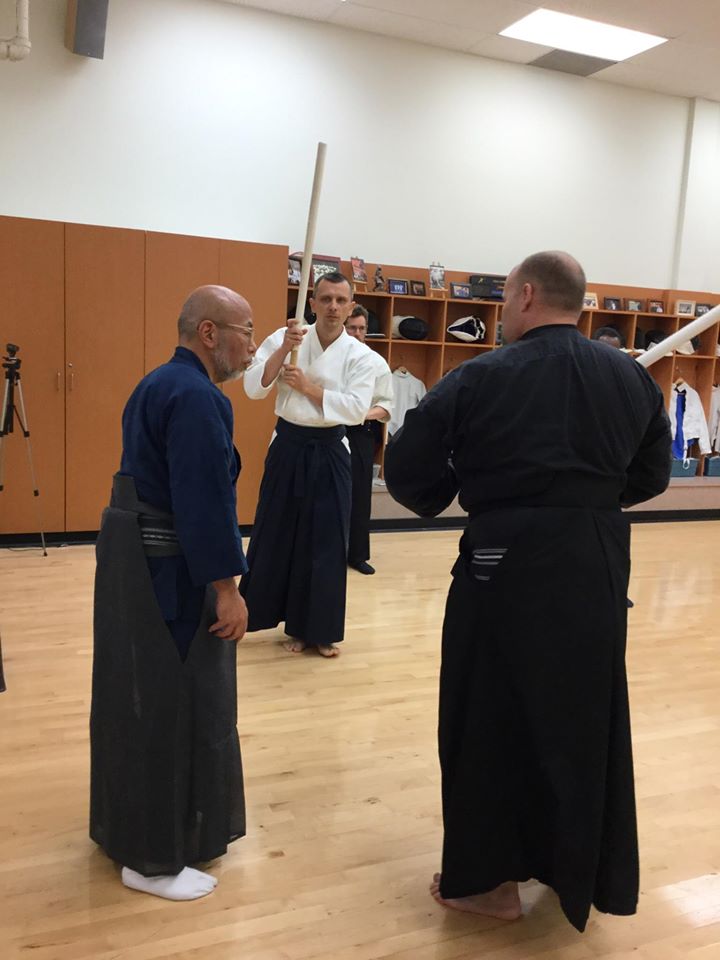
Discussing the details about correct distance
Knowing what the opponent is thinking is likewise crucial for your survival. To illustrate this, Sensei discussed the section of the Heiho Kadensho entitled “Listening to the Sound of the Wind and the Water”.
In our post-seminar discussion period, he imparted to the students two rather important pieces of Shinkage Ryu philosophy: the key philosophy of Kamiizumi-Ise-no-Kami (the founder of Shinkage Ryu) and the central philosophy from Yagyu Sekishusai (also known as Yagyu Munetoshi, the second headmaster of Shinkage Ryu).
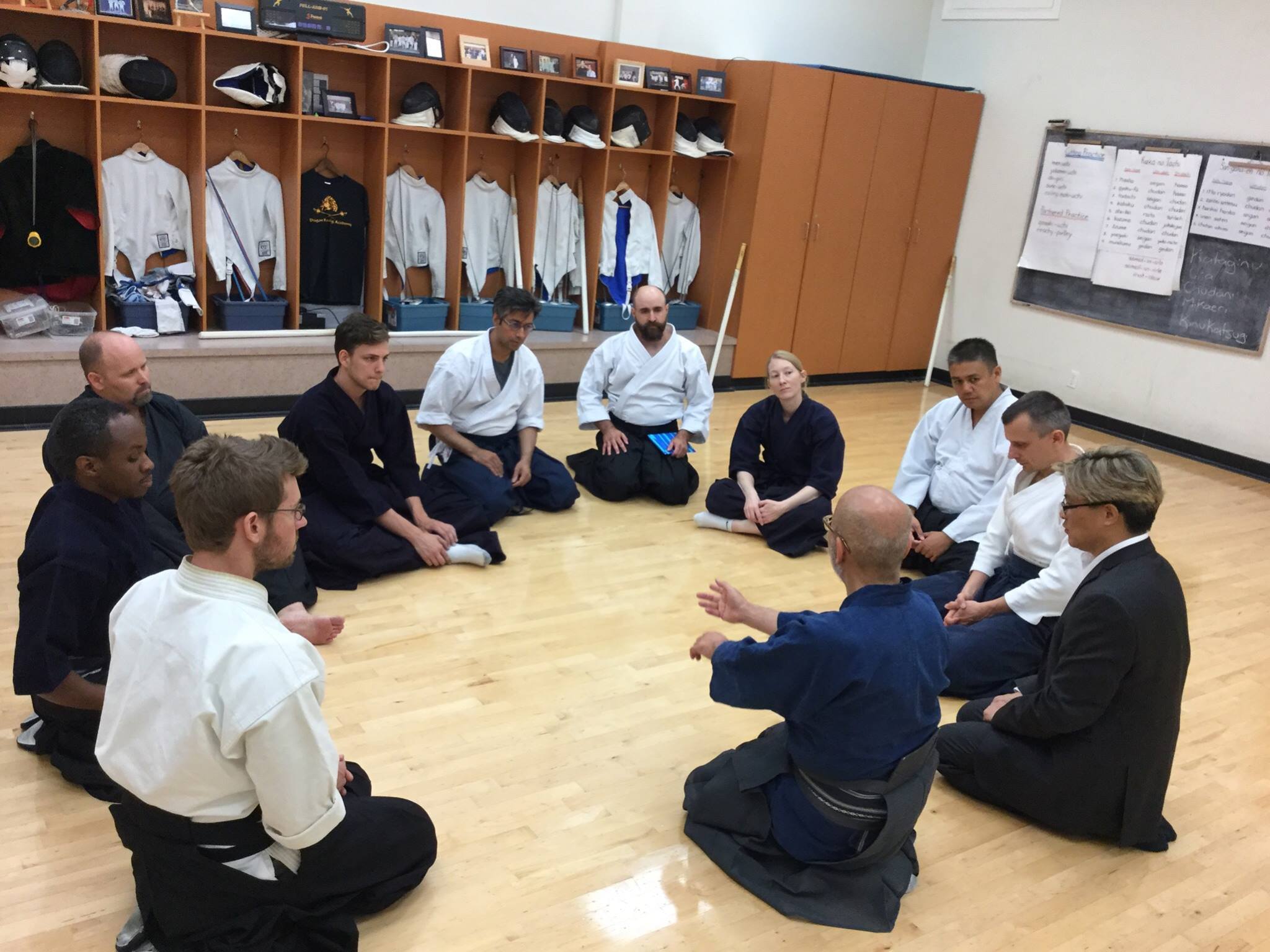
Post-seminar discussion on Yagyu philosophy
Kamiizumi-Ise-no-Kami’s ground-breaking philosophy reads like this:
“The concept of offense and defense lies in adapting one‘s action to one’s enemy, much in the same way a sailor will raise the sail when the wind rises or a hunter will release the hawk on sighting a rabbit.”
And from Yagyu Sekishusai:
“The ultimate purpose of Shinkage Ryu is not to defeat an opponent. Rather, it is a means to defeat yourself of yesterday.”
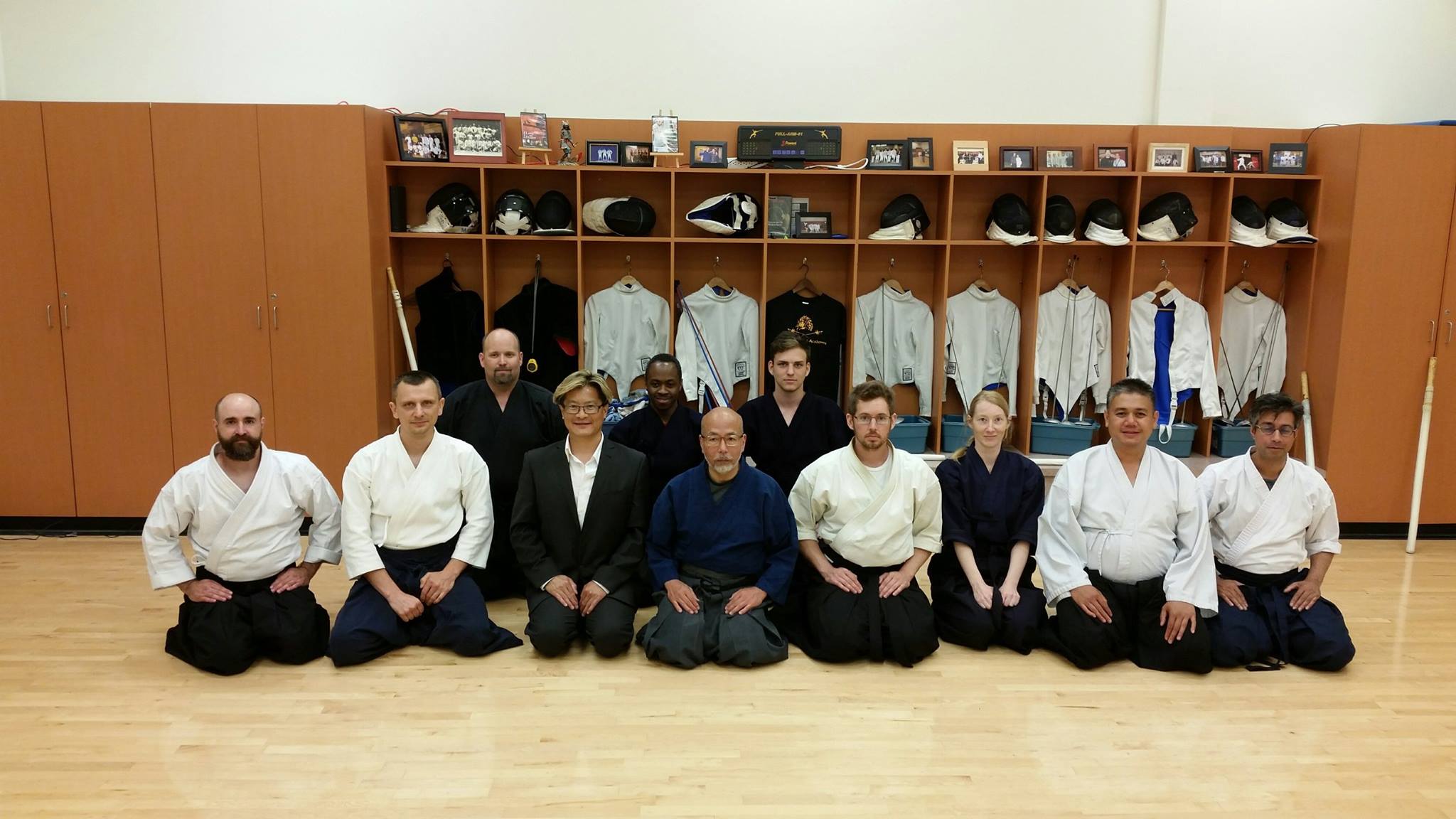
The 2016 Kuka-no-Tachi Seminar Group
______________________________________________________
In conclusion
This visit was a very interesting and thought-provoking experience. For the kata-collectors out there who are only interested in accumulating more kata, these were not the type of seminars for that.
Kajitsuka Sensei felt the time was right to begin to add depth to our study of the forms. We have a surface appreciation for the forms (the kata) and now is the time to add some depth. It was very much focused on adding quality rather than more quantity. You can collect all number of kata but where does that leave you when all is said and done? You’re still feeling empty. It’s not until you add some depth to the study that it takes on a deeper meaning.
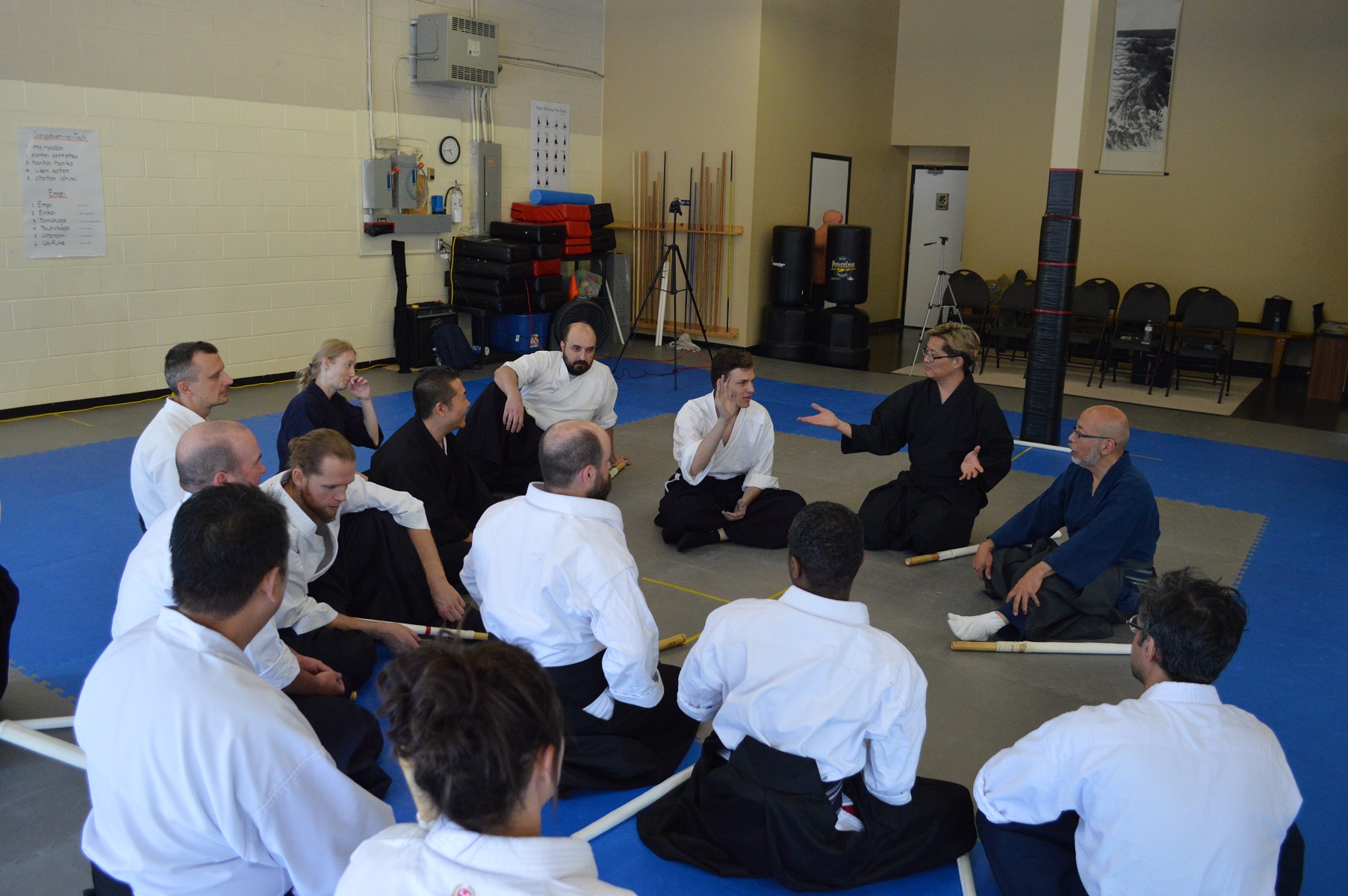
The post-seminar discussion period – a very valuable time
You can walk through the kata and think you know what you’re doing, but really you don’t. You’re just going through the motions. Therefore, in a technical sense, Sensei was very much focused on refining the movements and techniques that we had been practicing, which in hindsight I agree is precisely what we really needed.
There was also a lot of focus on the mind this time. He spent some time on mental concepts in training such as the concept of Ken-Tai as discussed in the Sword and the Mind and developing the ability to shift seamlessly from one state of mind to the other in the midst of action.
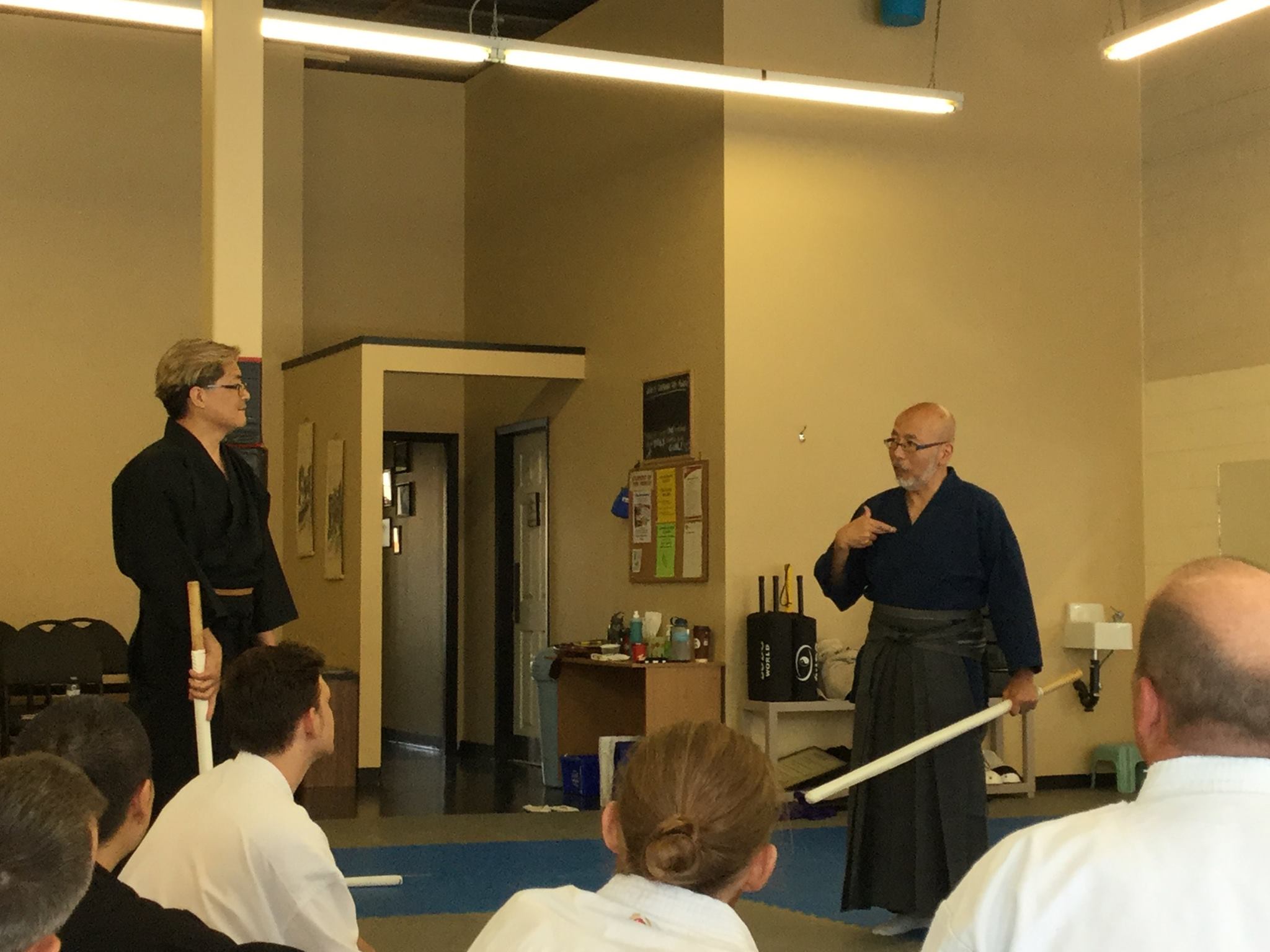
Explaining the mindset at certain points in the kata
Issues of timing and rhythm figured prominently in our sword practice also, illustrating to us the concepts of when to cut (timing) as well as how to cut (rhythm). In the Kuka-no-Tachi seminar, we examined how to read the mind of the opponent and Sensei referenced the section named “Listening to the Sound of the Wind and the Water” as an important passage for us to study. We even had philosophical discussions on the purpose and aim of the art of Yagyu Shingan Ryu and why it is aptly named Taijutsu (body art).
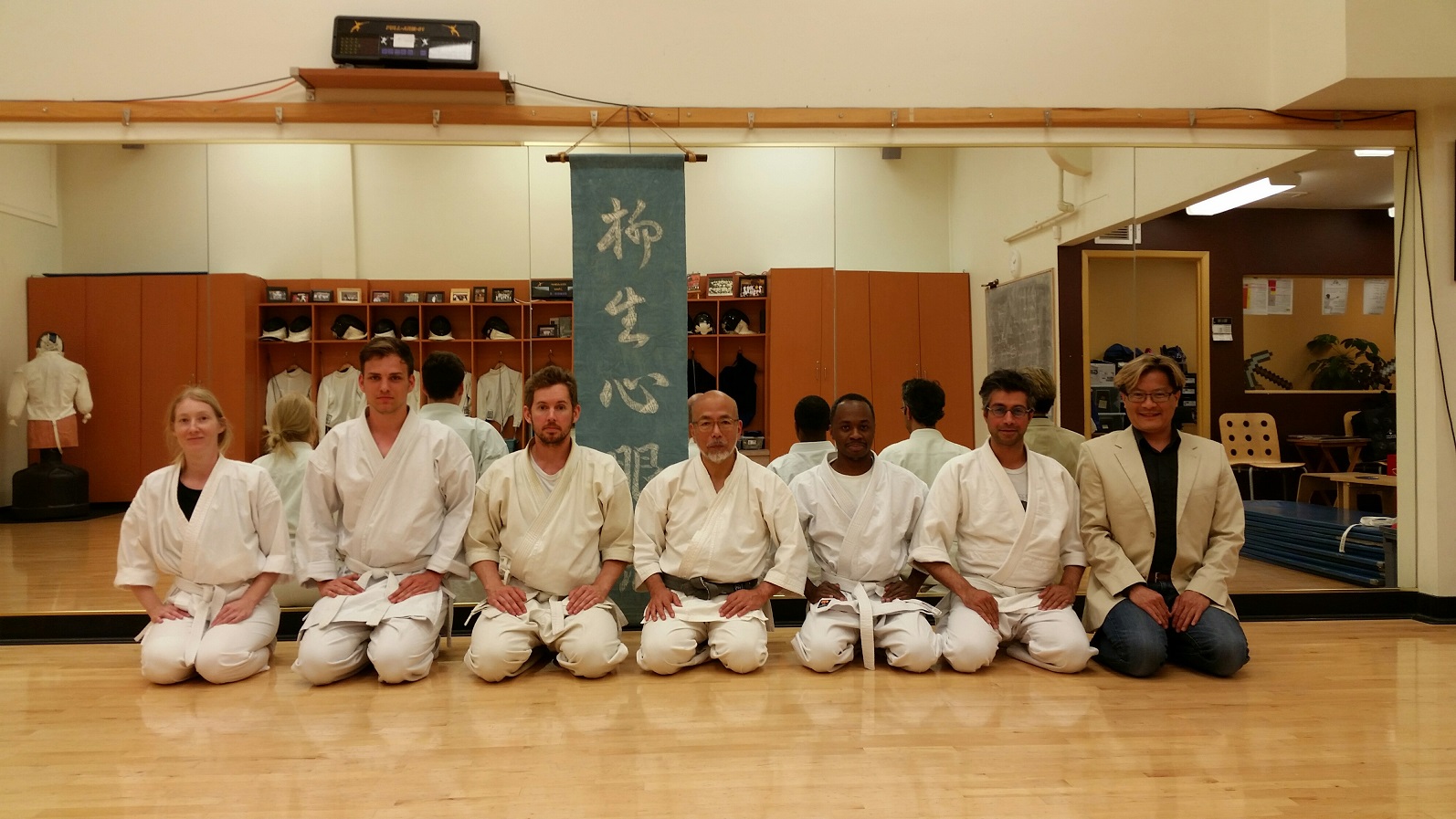
The Canadian Yagyu Shingan Ryu Group (with Mr. Tong, the translator)
Finally, he left us with some of the key values in Shinkage Ryu, the spirit of the style. Kamiizumi-Ise-no-Kami’s idea of observing and then responding appropriately to the opponent given the circumstances is an important piece of sword-fighting philosophy. In other words, the principle of changing in an ever-fluid situation to what you see before you. We are not the type of style that seeks to relentlessly crush the enemy. Instead, we flow with the opponent and respond appropriately to what the opponent does. In this way, you cannot be rigid and unyielding, which describes the movements and mindset of Shinkage Ryu perfectly.
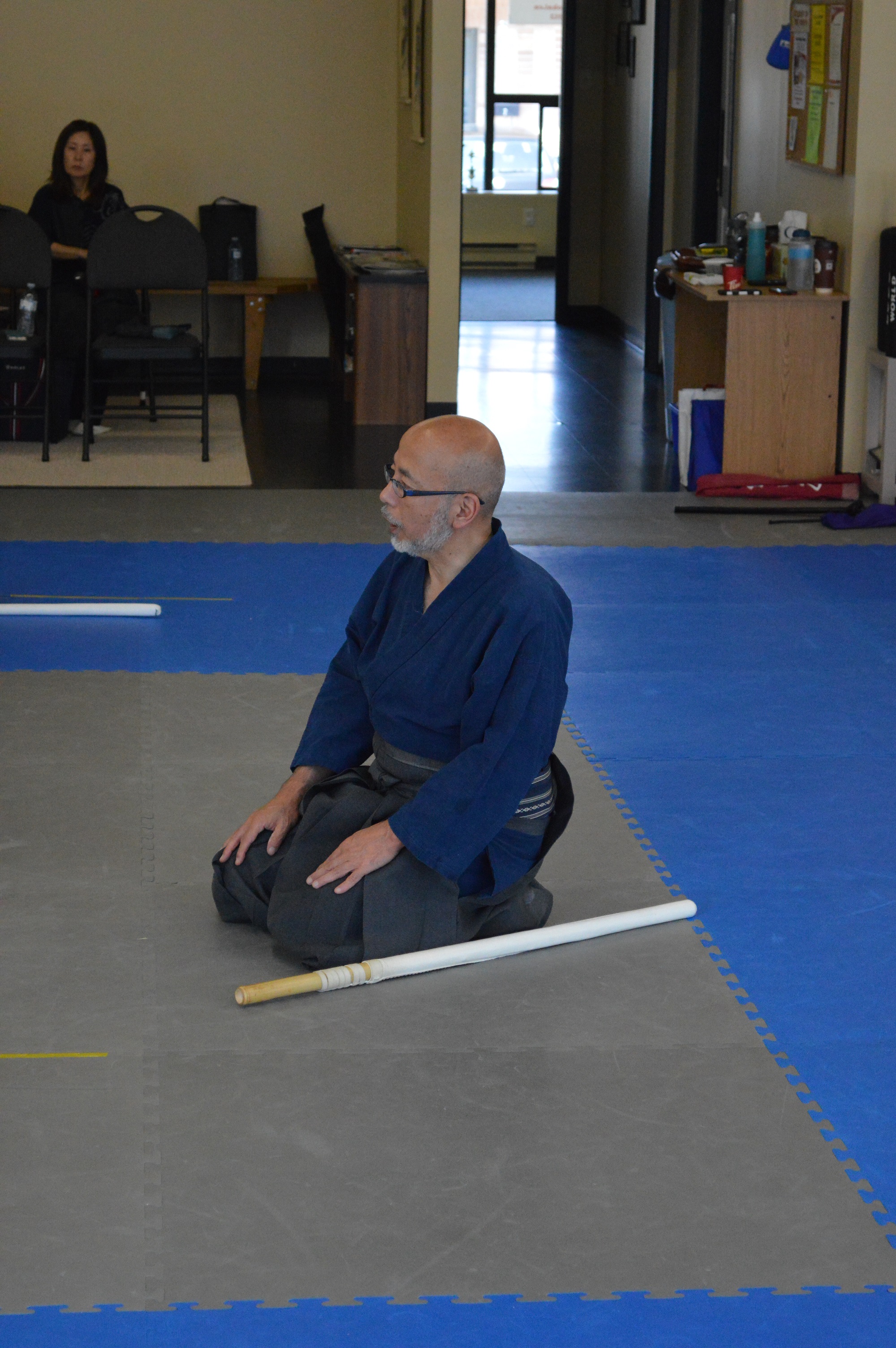
Kajitsuka Sensei reflecting perfectly the mindset and spirit of Yagyu Shinkage Ryu
From Yagyu Sekishusai, he guided us to look at the soul of Shinkage Ryu: our aim is not conquering others but conquering ourselves. In other words, we strive to become a better person, improving ourselves from who we were yesterday, which naturally leads to the thought of helping others, instead of conquering others, a very Buddhist idea.
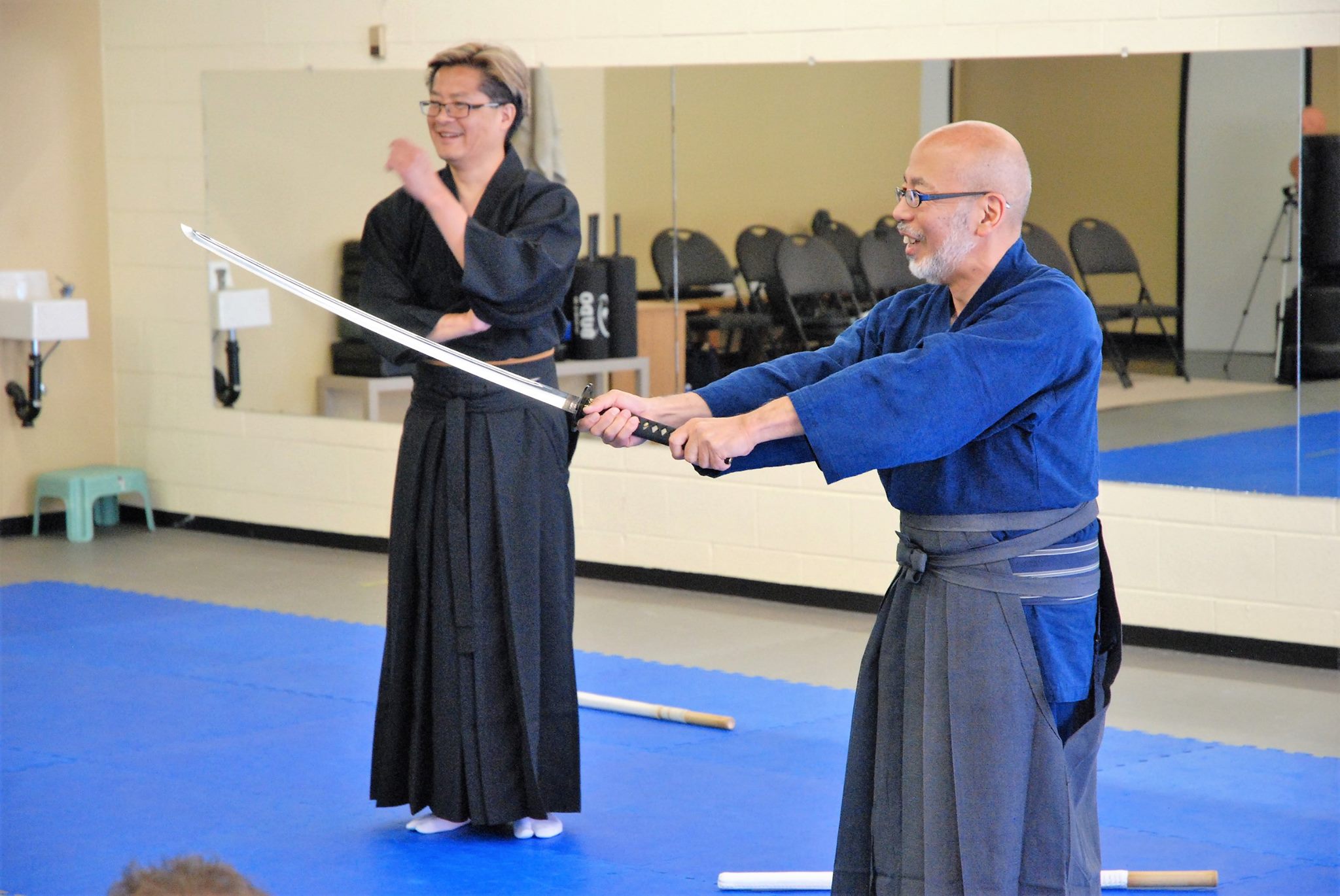
Having some fun with the kata
And upon reflection, this is perfectly logical as we must remember that Yagyu Munenori and Takuan Soho, the Zen master, were very close friends. Again, a deep look at the core spirit of the style. Life-giving sword? It makes perfect sense.
What will we take away from this year’s visit by Kajitsuka Sensei? Depth. We got depth. And that’s a good thing.
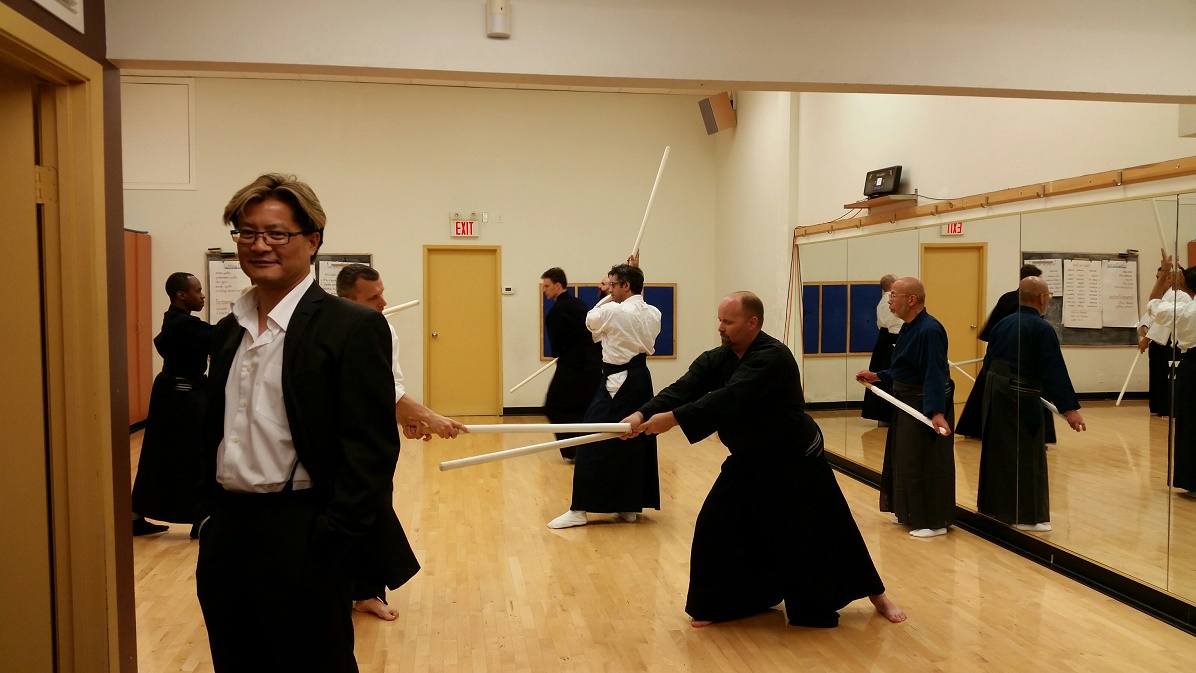
These 2016 seminars marked an important stage in our development. It was a great experience.
